Petunias are one of the most loved flowering plants in the world, loved for their beautiful blooms and bright colors. Petunias are very popular in India. They look great in gardens, on balconies, and on patios, and they add color to both urban and rural areas. This blog post will tell you about the petunia flower season in India and how to plant, care for, and enjoy these lovely flowers.
When is Petunia Flower Season in India?
In India, petunias do very well in the cool winter months. The best time to plant is in October or November, right before winter starts. This gives the plants time to get established before they bloom in large numbers from December to March. At this time of year, the cool weather and lots of sunshine make it ideal for petunias to grow.
Types of petunias :
Petunias come in a variety of types, each offering unique characteristics that make them suitable for different gardening needs. Here are the main types of petunias you can consider for your garden:
1. Grandiflora Petunias :
Characteristics:
Bloom Size: Grandiflora petunias are known for their large, showy blooms, which can reach up to 4-5 inches in diameter.
Appearance: These petunias often have ruffled edges and come in a wide range of colors, including solids, bicolors, and striped patterns.
Growth Habit: They tend to have a more upright growth habit and can be a bit more delicate compared to other types.

2. Multiflora Petunias :
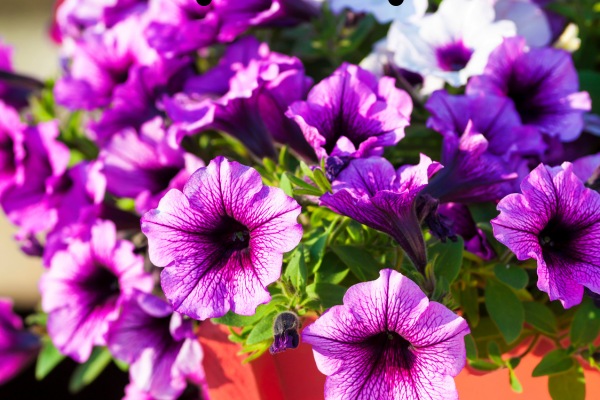
Characteristics:
- Bloom Size: Multiflora petunias produce smaller flowers, typically around 2 inches in diameter.
- Appearance: While the blooms are smaller, they are produced in greater abundance, creating a lush, colorful display.
- Growth Habit: These petunias are more compact and bushy, making them resilient to adverse weather conditions.
3. Milliflora Petunias:
Characteristics:
- Bloom Size: Milliflora petunias have the smallest blooms, around 1 inch in diameter.
- Appearance: Despite their small size, these petunias bloom profusely, creating a charming and delicate look.
- Growth Habit: They have a compact growth habit, which makes them ideal for small spaces and containers.
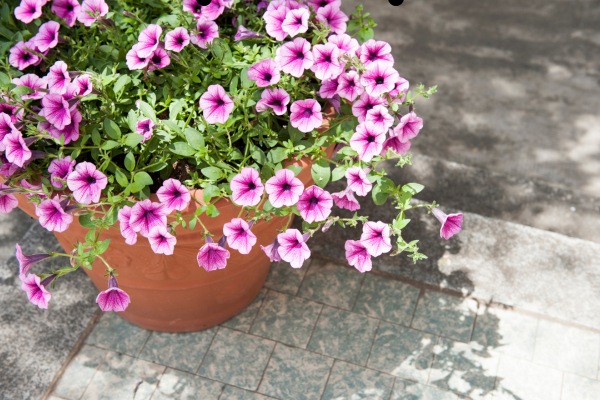
4. Wave Petunias:
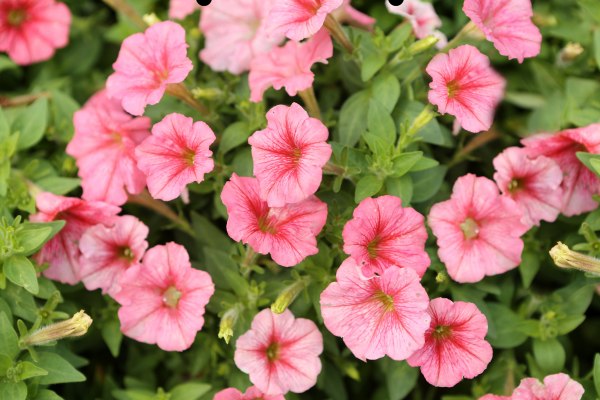
Characteristics:
- Bloom Size: Wave petunias have medium-sized blooms that come in a variety of vibrant colors.
- Appearance: These petunias are known for their spreading habit, creating a wave-like effect as they grow.
- Growth Habit: They can spread up to 4 feet, making them excellent ground cover plants.
5. Supertunia Petunias :
Characteristics:
- Bloom Size: Supertunias produce large, vibrant blooms similar to Grandiflora petunias.
- Appearance: They come in a wide range of colors and patterns, known for their continuous blooming throughout the season.
- Growth Habit: These are more robust and require less maintenance compared to other types.
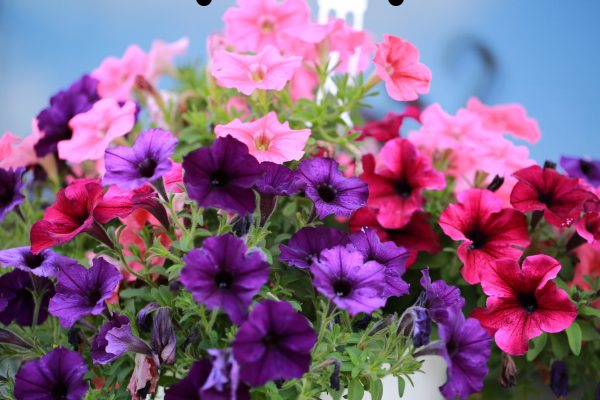
Others Varieties:
1. Petunia axillaris
- Common color: White
- Description: Known as the large white petunia, Petunia axillaris produces fragrant, large, white flowers. It is a night-blooming species that attracts moths and other nocturnal pollinators.
2. Petunia × atkinsiana (Petunia hybrida)
- Common colors: Wide range including white, yellow, pink, red, purple, blue, lavender, salmon, magenta, bicolor, striped, and spotted.
- Description: This is the most widely cultivated petunia species, resulting from the hybridization of different Petunia species. Petunia hybrida is popular in gardens and landscapes due to its extensive color range and varied patterns. It includes several subgroups based on flower size and growth habits:
- Grandiflora: Large flowers, available in many colors and patterns.
- Multiflora: Smaller flowers, more weather-resistant, and available in many colors.
- Milliflora: Tiny flowers, ideal for compact growth.
- Spreading or Wave Petunias: Vigorous growth, ideal for ground cover and hanging baskets.
3. Petunia integrifolia
- Common color: Purple
- Description: Also known as the violet petunia, this species is characterized by its small, vibrant purple flowers. It is more resistant to harsh weather conditions compared to other varieties and has a more compact growth habit.
4. Petunia inflata
- Common color: Purple
- Description: This species features tubular purple flowers and is native to South America. It is less commonly cultivated but contributes to the genetic diversity of hybrid petunias.
Detailed Color Varieties and Patterns in Petunia hybrida
- White Petunias
- Scientific name: Petunia × atkinsiana (various cultivars)
- Characteristics: Pure white petals, sometimes with a yellow throat or subtle veining. Examples include ‘Daddy White’ and ‘Madness White’.
- Yellow Petunias
- Scientific name: Petunia × atkinsiana (various cultivars)
- Characteristics: Ranges from pale yellow to vibrant lemon yellow. Examples include ‘Prism Sunshine’ and ‘Easy Wave Yellow’.
- Pink Petunias
- Scientific name: Petunia × atkinsiana (various cultivars)
- Characteristics: Shades from soft pastel pink to deep magenta. Examples include ‘Bubblegum Pink’ and ‘Shock Wave Pink Vein’.
- Red Petunias
- Scientific name: Petunia × atkinsiana (various cultivars)
- Characteristics: Bright to deep red petals. Examples include ‘Ultra Red’ and ‘Wave Red’.
- Purple Petunias
- Scientific name: Petunia × atkinsiana (various cultivars)
- Characteristics: Deep, rich purple shades. Examples include ‘Dreams Midnight’ and ‘Purple Wave’.
- Blue Petunias
- Scientific name: Petunia × atkinsiana (various cultivars)
- Characteristics: True blue to violet-blue hues. Examples include ‘Blue Daddy’ and ‘Easy Wave Blue’.
- Lavender Petunias
- Scientific name: Petunia × atkinsiana (various cultivars)
- Characteristics: Soft lavender shades. Examples include ‘Lavender Storm’ and ‘Lavender Sky’.
- Salmon Petunias
- Scientific name: Petunia × atkinsiana (various cultivars)
- Characteristics: Warm salmon pink tones. Examples include ‘Salmon Velvet’ and ‘Salmon Shock Wave’.
- Magenta Petunias
- Scientific name: Petunia × atkinsiana (various cultivars)
- Characteristics: Intense magenta hues. Examples include ‘Tidal Wave Cherry’ and ‘Opera Supreme Magenta’.
- Bicolor Petunias
- Scientific name: Petunia × atkinsiana (various cultivars)
- Characteristics: Two-tone flowers with contrasting colors, often with a star pattern or edges. Examples include ‘Stars and Stripes’ and ‘Candy Cane’.
- Striped Petunias
- Scientific name: Petunia × atkinsiana (various cultivars)
- Characteristics: Flowers with stripes of different colors. Examples include ‘Red Star’ and ‘Purple Star’.
- Spotted Petunias
- Scientific name: Petunia × atkinsiana (various cultivars)
- Characteristics: Flowers with spots or speckles of different colors. Examples include ‘Night Sky’ (purple with white spots) and ‘Galaxy’ (white with purple spots).
Petunias are incredibly versatile and have been bred to exhibit a wide range of colors and patterns, making them a popular choice for gardeners and landscape designers looking to add vibrant and diverse floral displays.
Planting Tips For Petunias :
- There is a simple way to plant petunias. Here is a step-by-step guide:
- Pick the Right Place: Petunias need at least five to six hours of direct sunshine every day. Pick a spot in your yard or on your balcony that gets a lot of sun.
- Prepare the soil : Petunias like soil that drains well and has a lot of organic matter in it. To make the soil more fertile, mix in compost or manure that has been well-rotted.
- Planting : When you plant the petunia seeds, leave about 12 to 18 inches of space between them so they can grow. After planting, give them a lot of water.
- Watering: Make sure the dirt is always slightly wet, but not soaked. When you water, just water the base of the plant. If you wet the leaves, fungi can grow on them.
Taking Care of Petunias :
- Fertilising: Every two weeks, give your petunias a balanced liquid fertiliser to help them grow well and bloom lots.
- Pruning: Regularly remove the dead flowers to make the plant bloom again and keep it from going to seed.
- Pest Conyrol: Look out for aphids, caterpillars, and other common pests. To keep them away, use biodegradable pesticides or soap that kills bugs.

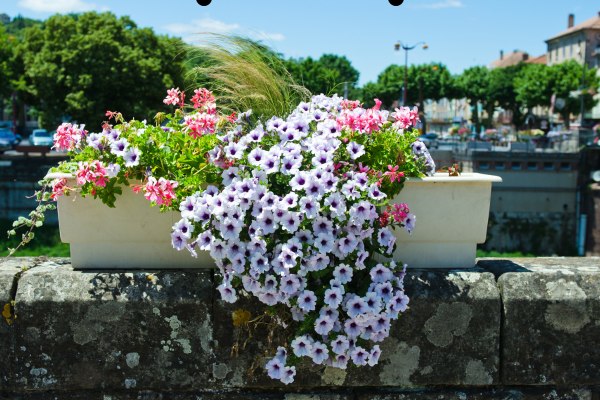
Taking in the Blooms :
Petunias can make any room look like a colorful paradise. Here are some ways to get the most out of your petunia flowers:
1. Beds in the Garden: Put petunias in garden beds to make colorful borders or mixed flower beds.
2. Hanging Baskets: Wave petunias look great in hanging baskets because they make the yard look like it’s falling.
3. Pots: Petunias do well in pots, which makes them great for patios, porches, and terraces.
4. Displays inside: Put petunia pots near windows so they can get lots of sunlight to make rooms inside look better.
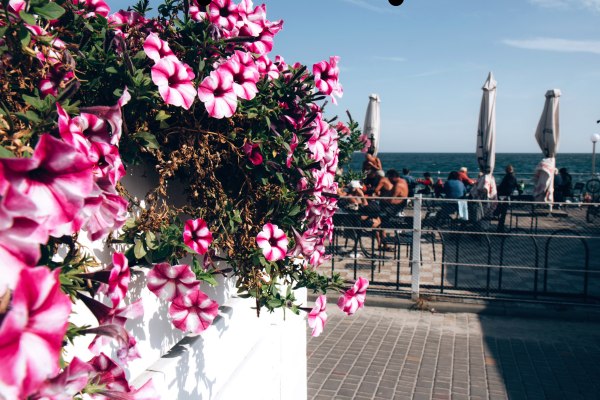

In conclusion :
The petunia flower season in India is a wonderful time for people who love farming. Petunias add color and joy to any plant because they are easy to take care of and have beautiful flowers. Through the winter, you can enjoy a beautiful display of petunias if you follow the advice in this blog.
FAQ of Petunia Flower Season in India :
What is the season of petunia in India?

The petunia flower season in India typically spans from December to March. Petunias are planted in October to November, just before the onset of winter, to ensure they establish well and bloom during the cooler months.
What is the season for petunias?

Petunias are generally winter flowers in India, blooming during the cool season from December to March. In other parts of the world, petunias may bloom in spring and summer.
Is petunia a summer or winter flower?

In India, petunias are considered winter flowers. They thrive and bloom in the cooler winter months from December to March.
What is the flower period for petunias?

The flowering period for petunias in India is from December to March. This period can vary slightly depending on the specific growing conditions and care provided.
Which month do flowers bloom in India?

Petunias start blooming in December and continue to bloom through March. The exact timing can vary depending on the planting time and local climate conditions.
Do petunias like sun or shade?

Petunias thrive in full sunlight. They need at least 5-6 hours of direct sunlight daily to grow well and produce abundant blooms. While they can tolerate partial shade, their flowering performance is best in sunny conditions.
Can petunias be grown indoors?

Yes, petunias can be grown indoors if they receive plenty of sunlight. Place the pots near windows that get ample sunlight to ensure the plants thrive. Indoor petunias can brighten up your living space with their vibrant colors.
What pests should I watch out for on my petunias?

Common pests that can affect petunias include aphids and caterpillars. Monitor your plants regularly and use organic pesticides or insecticidal soap to control these pests and prevent damage to your plants.
How do I deadhead petunias, and why is it important?

Deadheading involves removing spent flowers from the plant. This encourages new blooms and prevents the plant from going to seed. Regularly deadheading your petunias ensures a continuous display of fresh flowers.


4 thoughts on “Petunia Flower Season in India : A Burst of Color and Charm Attractive 5 Varieties”